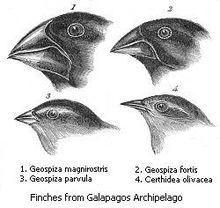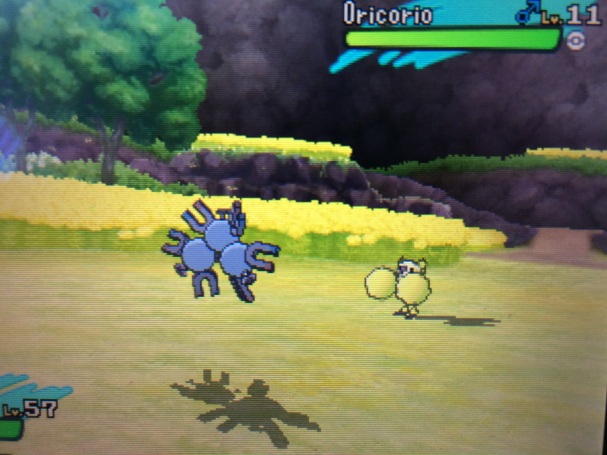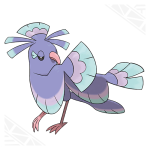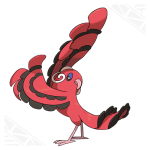WOW. So after seeing the promotional materials released for Sun and Moon, the immediate thought that came to my mind was of Oricorio and it’s ‘forms’ that depend on which island the Pokemon lives- it’s a reference to Charles Darwin and his finches! When Darwin sailed down to the Galapagos, he observed birds with some vastly different adaptations in beak shape; he determined that those with beaks suited to the environment and food supply were more likely to survive and pass down their genetics (beak shape, coloration), causing the adaptation to continue to offspring. Such began his theories of Natural Selection and Evolution…

Above image: Finches from the Galapagos Archipelago. Each bird has a slightly different head shape and beak shape. Pictured are G. magnirostris, G. fortis, G. parvula, and C. olivacea
And OH MY GOODNESS look at what we have here…
Above 4 images, the Oricorio found in Pokemon Sun and Moon. From right to left, a bright pink Oricorio based on Pacific dance styles (Pa’u style), a blue-purple Oricorio based on Japanese dance (Sensu style), a red Oricorio based on Flamenco dance (Baile style), and a bright yellow Oricorio based on Cheerleading (Pom-Pom style). Designs by Game Freak.
Oricorio has different typesets and morphs on different islands clearly based off of styles of dance. Along with the obvious visual difference, each Oricorio has its own type assignment besides flying.
Now, the whole mantra of Pokebiology is that Pokemon was not designed by Biologists (or any science discipline for that matter) so that we need to take everything with a grain of salt.
I bring that quick and friendly reminder up because Oricorio is not a direct comparison to Darwin’s finches. After playing through Sun, it’s painfully apparent that these delightful dancers are actually another case of metamorphosis and quick adaptation. To truly be a parallel to Darwin’s finches, there has to be a genetic component.
What do we mean when we say genetic component? Basically, these birds have to hatch as the Oricorio they are and remain unchanged. Let’s ignore the nectar portion of Oricorio for a second: If a DNA mutation causes an Oricorio with an electric typeset to hatch within the fire-typeset population, it probably wouldn’t fare so well. A bright yellow cheerleader themed bird would be easy to spot, and without the proper dance moves probably wouldn’t find a mate. That means our yellow Oricorio would not pass down its appearance, or phenotype, to its offspring. But, if it somehow did find a mate, there is a chance that DNA mutation would pass to the offspring, leading to the bright pom-pom wings and yellow feathers to appear in some seriously cheerful Oricorio chicks.
But, that’s not the case in Sun and Moon. Considering the nectar, each Oricorio has the chance to change depending on which meadow it finds itself in. Naturally, that helps when it comes to hunting, camouflage, and presenting the correct courting dance to attract other Oricorio. Below is a good example of how well that camouflage works: if we were to walk through Melemele meadow, we would probably end up walking by Oricorio without a second thought.

Above image: My Magneton, Faraday, encounters a yellow Oricorio in Melemele Meadow.
Another possibility that can be considered is that the nectar they drink has the ability to change their genetic code, then we have a situation where a DNA mutation occurs purposefully and is passed down, which still doesn’t entirely fit into our real-life finch example. (Stay tuned for another post on that idea entirely…)
But, for right now, our little dancing Oricorio make for a good reminder of actual, real life biology. I give the Game Freak folks some props for attempting to mirror some historical bio references.




